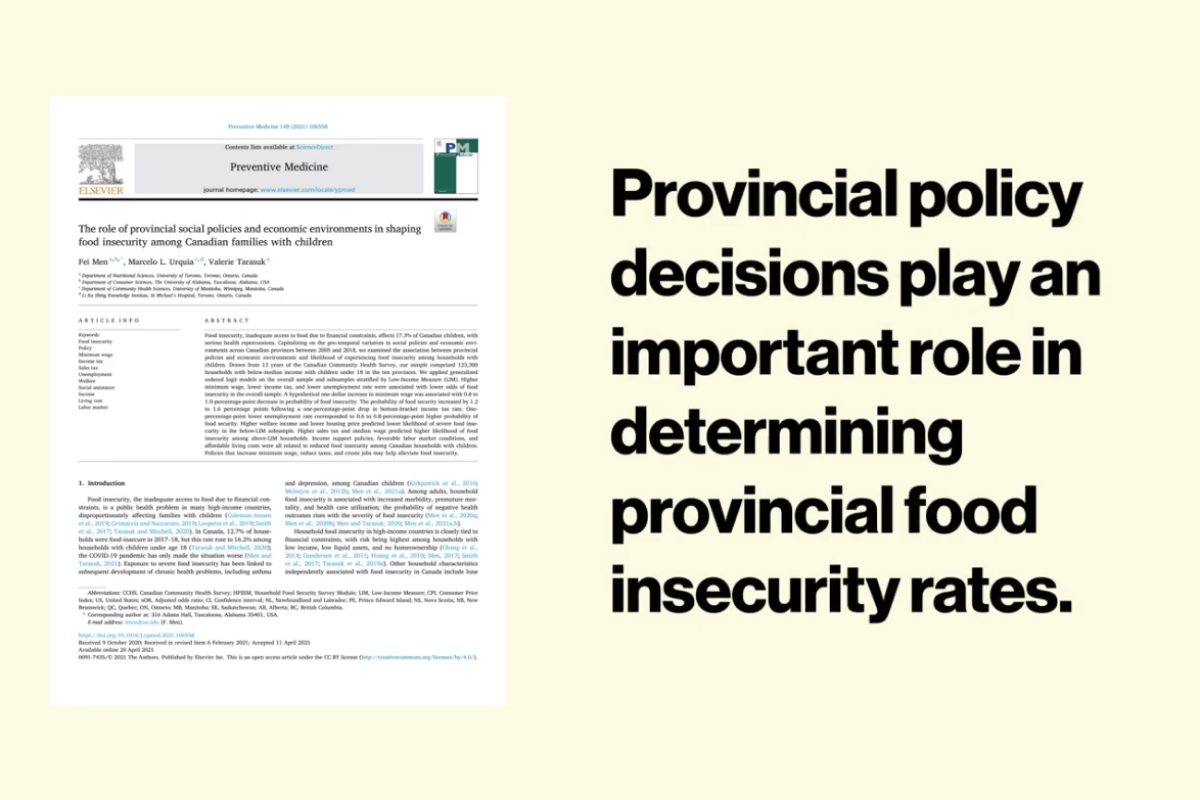Video: Provincial Policy Levers Explainer
June 23, 2021

Provincial policy decisions play an important role in determining the food insecurity rates of provinces because many of these decisions directly impact households’ financial circumstances. This explainer video highlights 3 key provincial policy levers.
This video explores the findings of our recent study, The role of provincial social policies and economic environments in shaping food insecurity among Canadian families with children, published in the journal, Preventive Medicine. We also created a fact sheet on this research.
Transcript:
In our new study, published in the journal, Preventive Medicine, we found that provincial policy decisions play an important role in determining provincial food insecurity rates.
Food insecurity is the inadequate or insecure access to food due to financial constraints and it is a serious public health problem in Canada. While rates of food insecurity vary considerably across the provinces, nowhere are the rates below 10%.
Food insecurity is not just a lack of food, but rather an experience of pervasive material deprivation due to financial constraints. Provincial policy decisions play an important role in determining food insecurity rates because many of these decisions directly impact households’ financial circumstances.
Our study examined the effect of provincial policies and economic environments on food insecurity among households with children under 18, using data from the Canadian Community Health Survey 2005-2018.
It identified three policy levers that provincial governments can use to reduce the rate of food insecurity in their jurisdictions.
A one-dollar increase in minimum wage was associated with 5% lower odds of experiencing food insecurity. Increasing minimum wage can help reduce food insecurity among workers who make up the majority for the food-insecure in Canada.
A $1000 increase in annual welfare income was associated with 5% lower odds of severe food insecurity. Increasing social assistance rates can help protect families from severe food insecurity which is associated with the greatest negative health outcomes and increased risk of premature death.
A one-percentage-point increase in the income tax rate for the lowest-income households was associated with 9% higher odds of experiencing food insecurity. Lowering this tax rate can reduce food insecurity by improving the financial circumstances of low-income households.
Provincial governments should make food insecurity reduction a priority and recognize that their decisions about minimum wage, welfare benefits, and income tax are actually food security policies.
